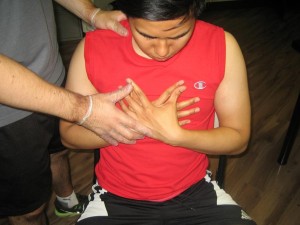Acute respiratory distress syndrome (ARDS) is known to cause significant damage to the lungs. The air sacs or alveoli and small blood vessels in the lungs are impaired. The damage disrupts the normal exchange of oxygen and carbon dioxide amidst the lungs and the blood. As a result, there is reduced oxygen in the blood and other parts of the body could not obtain adequate oxygen to function properly.
Possible causes
The precise cause of ARDS is not known, but it typically arises if already seriously sick or injured. Some of these conditions include the following:
- Pneumonia
Acute respiratory distress syndrome is known to develop rapidly, usually within 12-48 hours after the condition responsible for it develops. - Drug overdose
- Sepsis
- Near drowning
- Aspiration
- Multiple blood transfusion
Acute respiratory distress syndrome is known to develop rapidly, usually within 12-48 hours after the condition responsible for it develops.
What are the signs?
The initial indications of the condition might include:
- Increased breathing rate
- Rapid heart rate
- Difficulty breathing
- Agitation
Management of acute respiratory distress syndrome
The treatment for acute respiratory distress syndrome is carried out in the intensive care unit in a healthcare facility.
In most cases, the treatment might include:
- Pinpointing the issue responsible for causing ARDS
- Assistance with breathing using a ventilator and administration of oxygen
- Intravenous fluids
- Monitoring to ensure that fluid is not building up in the lungs
- Drugs such as antibiotics, anti-inflammatory medications, anti-anxiety drugs, diuretics and inhaled medications
Acute respiratory distress syndrome can be deadly in some cases. Those who survive the condition might have normal lung function after several months. As for serious cases, there is lasting pulmonary fibrosis.
Prevention
Acute respiratory distress syndrome is difficult to prevent since it can be triggered by various factors. Nevertheless, the potential for aspiration can be lessened by elevating the head of the bed.

